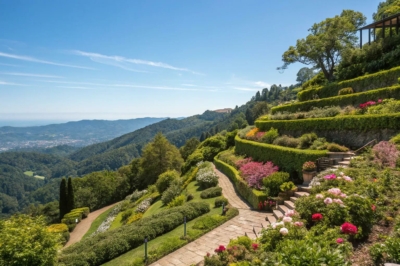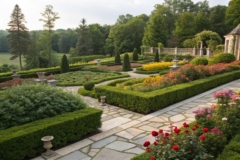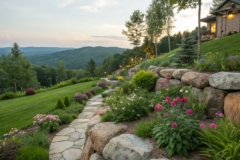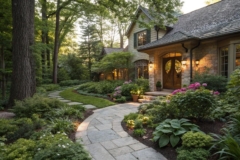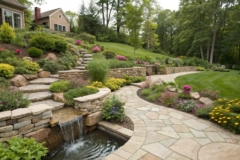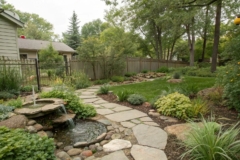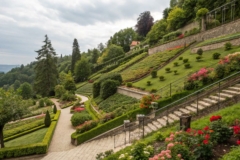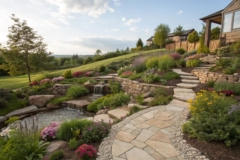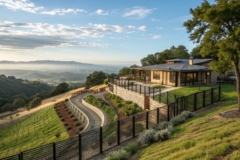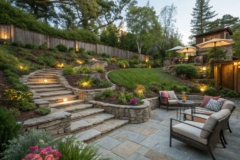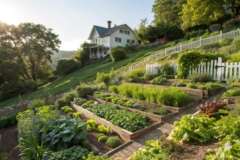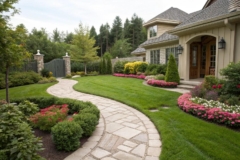1. Cost-Effective Landscaping Solutions
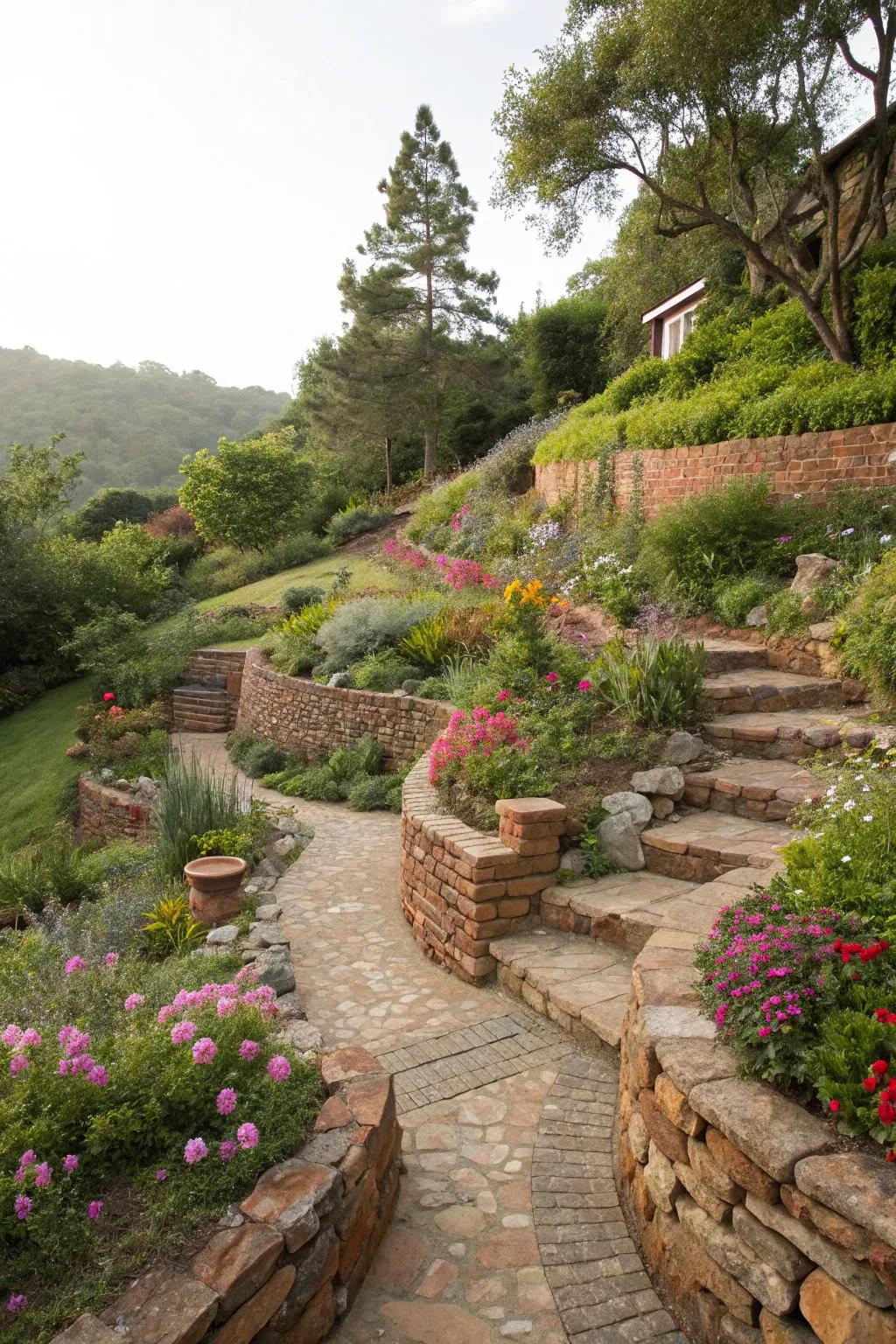
Use recycled materials like old bricks or stones to create retaining walls or paths without breaking the bank. I love the rustic charm these materials add to my garden.
These products might help:
- Recycled Brick Pavers: Enhance your garden paths with eco-friendly recycled brick pavers for a rustic appeal.
- Natural Stone Retaining Wall Blocks: Create sturdy retaining walls using natural stone blocks that blend seamlessly with your landscape.
- DIY Stone Pathway Kits: Design your own charming stone pathways with easy-to-use DIY kits, adding unique character.
2. Create a Historical Garden with Ancient Techniques
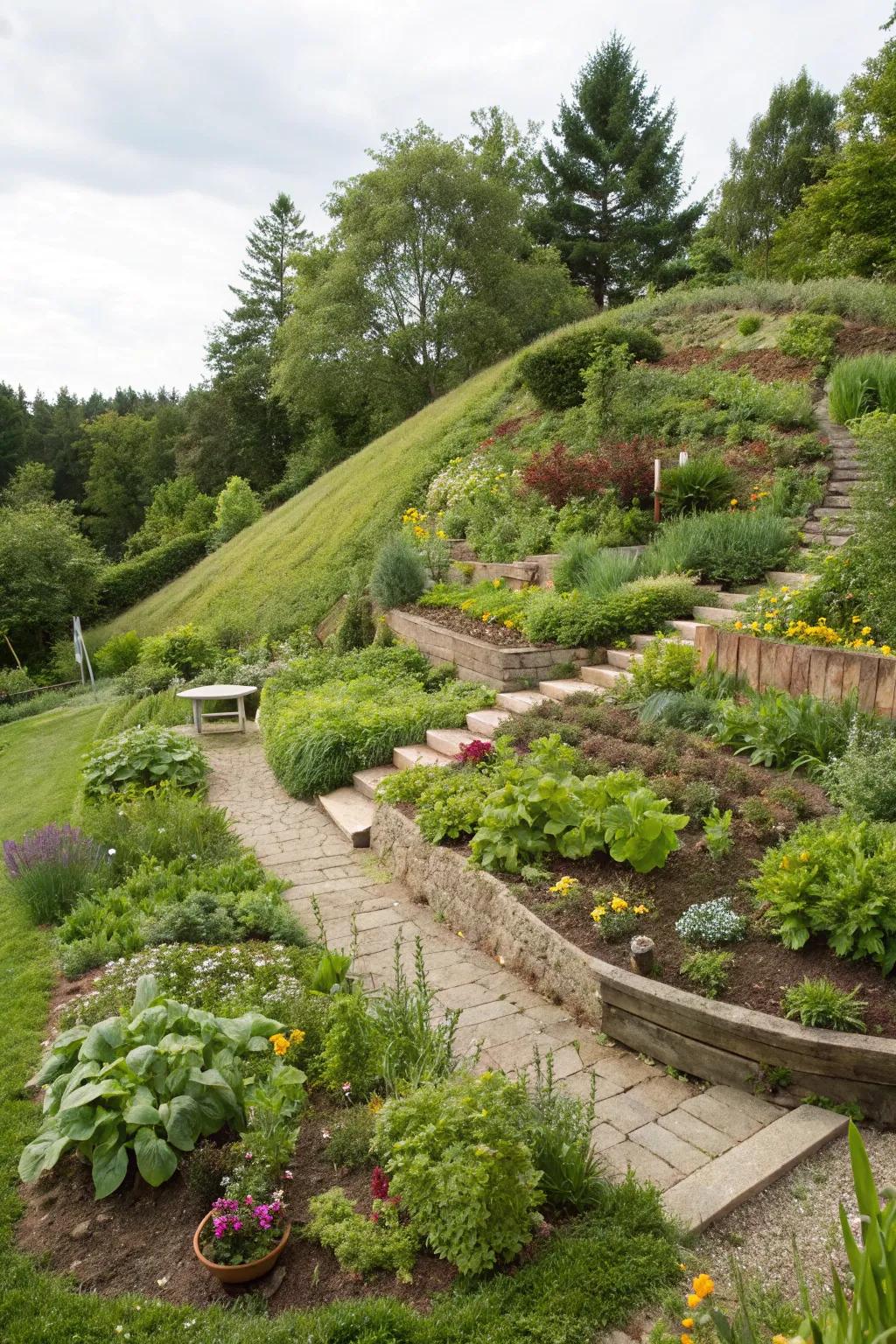
Incorporate ancient gardening techniques like hugelkultur or keyhole gardens for sustainability and aesthetic appeal. These methods add a unique touch, connecting the past with modern gardening.
Consider these options:
- Hugelkultur Garden Kit: Transform your hillside with a Hugelkultur kit; enhance soil health naturally and effectively.
- Keyhole Garden Frame: Build an eco-friendly keyhole garden to optimize water retention and plant growth on slopes.
- Terracing Garden Blocks: Easily create terraced levels on your hillside; perfect for stabilizing and planting varied flora.
3. Terraced Gardens for Usable Space
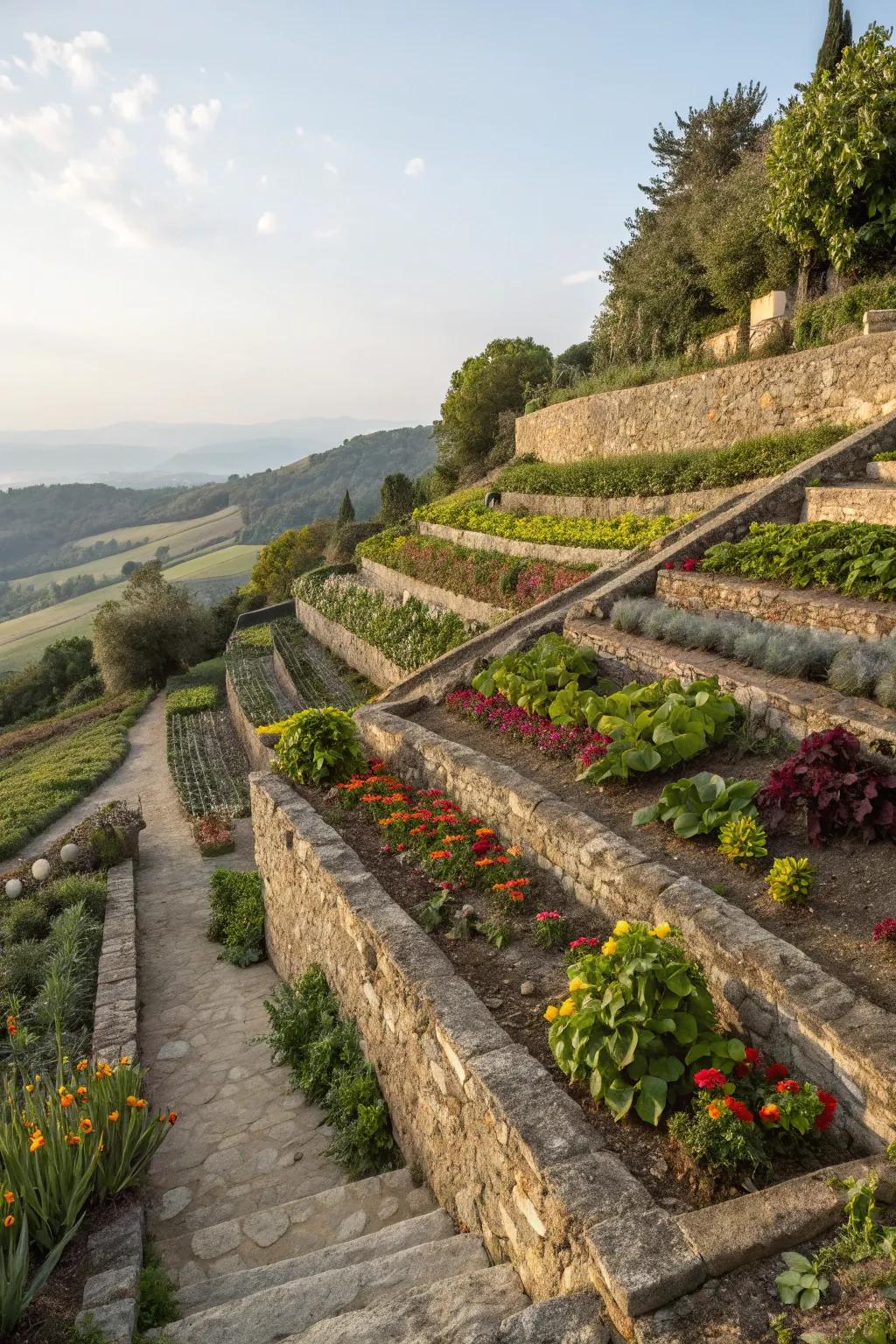
Terracing transforms a steep slope into a series of level steps, which can be planted with a variety of flowers and vegetables. I’ve used this approach to create a lush, multi-tiered garden that’s both functional and beautiful.
Possibly helpful picks:
- Garden Terracing Kits: Effortlessly create stunning terraces with easy-to-install terracing kits for your hillside garden.
- Stone Garden Edging Blocks: Enhance your terraced garden with durable, stylish stone edging; retain soil seamlessly.
- Drip Irrigation System: Maintain perfectly watered terraces effortlessly with a customizable drip irrigation system.
4. Natural Aesthetics with Organic Shapes
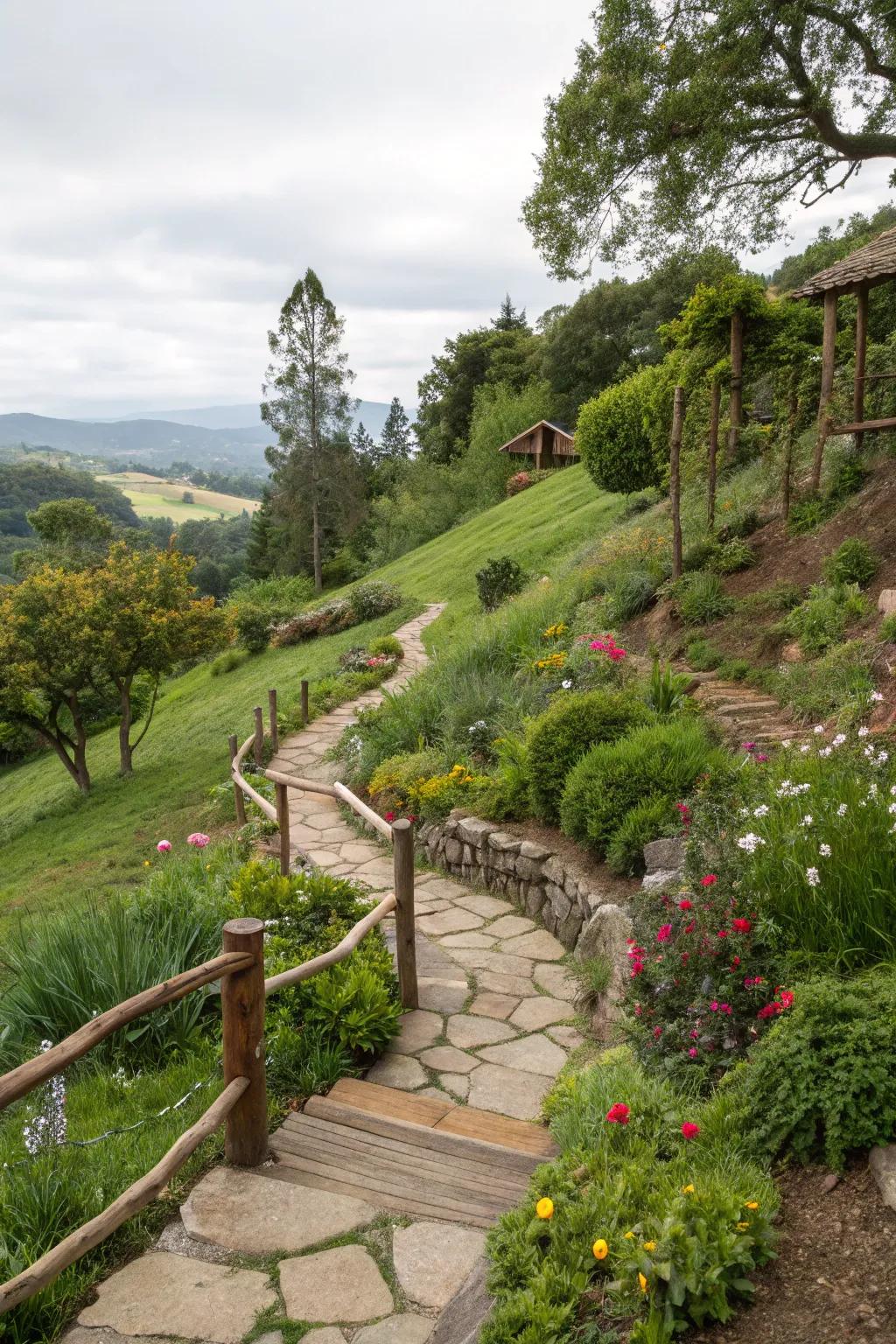
Incorporate organic shapes and materials to harmonize your garden with the surrounding landscape. My garden flows naturally, with curved paths and wooden accents that feel like an extension of the environment.
Explore these options:
- Curved Garden Path Pavers: Enhance your garden flow with curved pavers, blending seamlessly into the natural landscape.
- Wooden Garden Edging: Define garden boundaries with rustic wooden edging to maintain an organic and natural appearance.
- Natural Stone Garden Steps: Install stone steps for an aesthetic elevation change, harmonizing with your garden scenery.
5. Light Up the Landscape
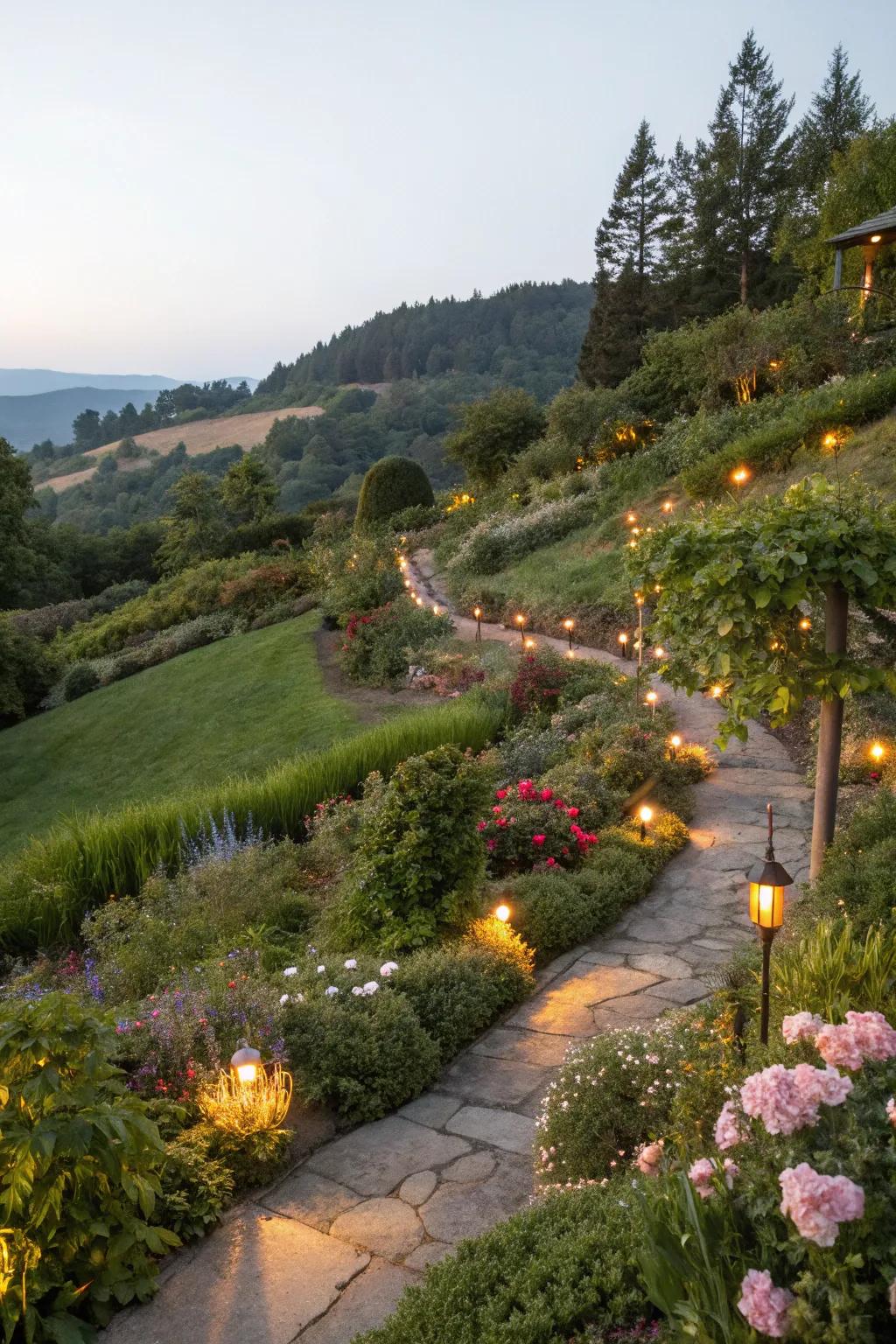
Incorporate solar or LED lights to illuminate pathways and highlight features at night. My hillside glows warmly in the evening, making it inviting and magical.
A few things you might like:
- Solar Pathway Lights for Gardens: Enhance your pathway with eco-friendly solar lights, creating a warm, inviting glow at night.
- LED String Lights for Outdoor Use: Transform your garden into a magical wonderland with versatile LED string lights.
- Waterproof LED Spotlights for Landscaping: Highlight your garden’s best features with durable, waterproof LED spotlights.
6. Unique Stone Sculptures for Focal Points
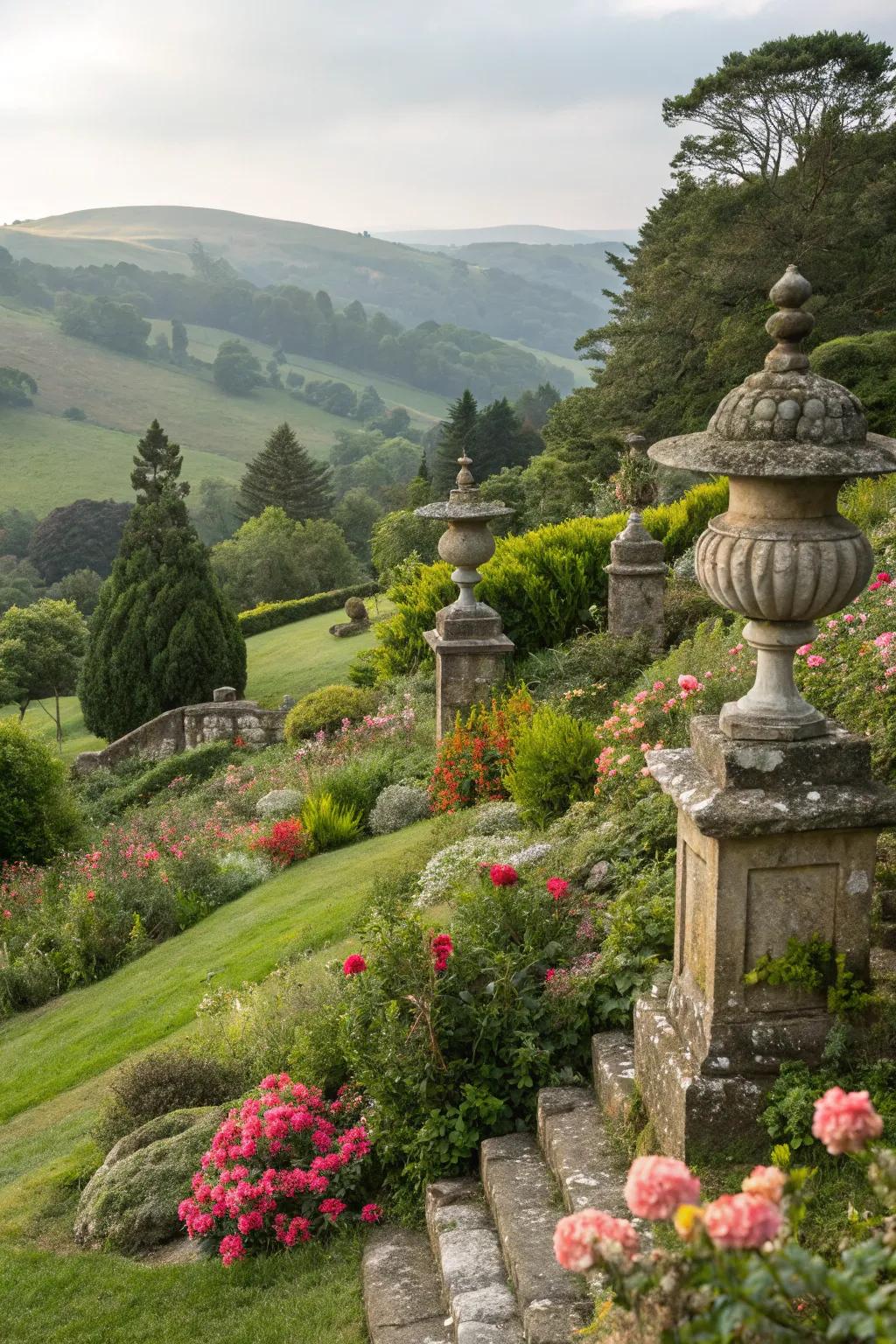
Place stone sculptures or features to draw the eye and add character to the landscape. I adore how a well-placed sculpture can become the talking point of any garden tour.
A few choices to try:
- Outdoor Stone Garden Urns: Enhance garden elegance by placing classic stone urns as focal points to captivate visitors.
- Decorative Stone Pillars: Add height and grandeur to your landscape with these elegant stone pillars.
- Hand-Carved Stone Statues: Introduce artistic flair to your garden with unique hand-carved stone statues.
7. Incorporate a Vegetable Garden

Terraced vegetable beds can make use of the slope while providing fresh produce. I love how the tiers in my garden maximize sunlight and space for my favorite vegetables.
Give these a look:
- Stackable Raised Garden Beds: Enhance your hillside garden with stackable raised beds, maximizing space and sunlight benefits.
- Terrace Garden Tool Set: Equip yourself with durable tools designed for efficient gardening on sloped terrains.
- Organic Vegetable Seeds Variety Pack: Start growing fresh produce with this variety pack of organic seeds, perfect for terraced gardens.
8. Erosion Control with Native Plants
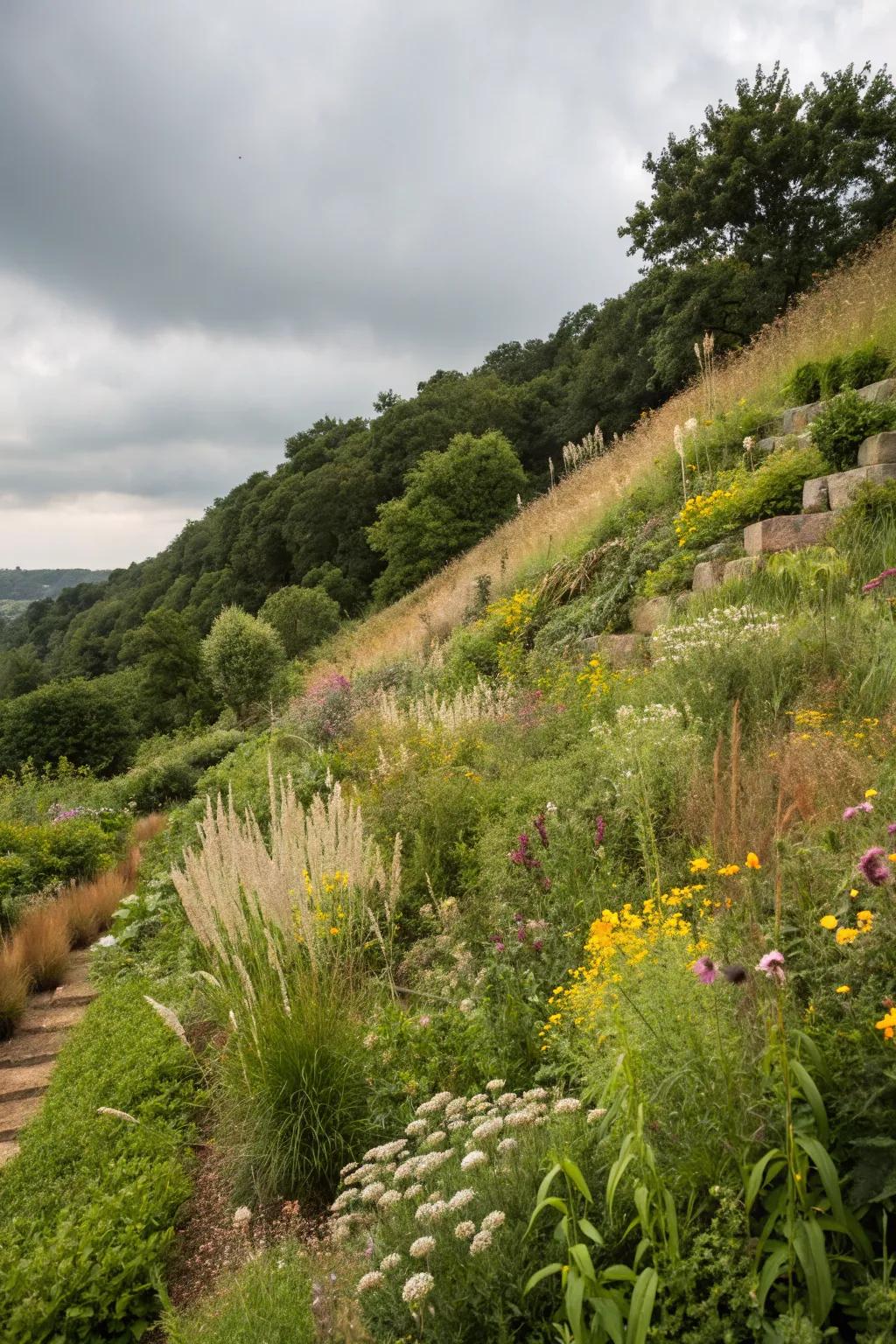
Using native plants with deep roots can help prevent soil erosion on slopes. I’ve chosen hardy local varieties that thrive with minimal care, keeping the soil stable and the garden vibrant.
Might be a good match:
- Native Plant Seed Mix: Plant native seeds to stabilize your slope and beautify without intensive maintenance. Shop now!
- Biodegradable Erosion Control Blanket: Use biodegradable blankets to protect against erosion while your plants establish. Secure your slope today!
- Drip Irrigation Kit for Hillsides: Ensure optimal watering for your hillside plantings with a tailored drip irrigation kit. Order now!
9. Rock Gardens for Natural Beauty

Rock gardens take advantage of the natural slope by incorporating boulders and stones for both stability and beauty. I’ve found that mixing rocks with hardy alpine plants creates a stunning, low-maintenance display.
A few suggestions:
- Assorted Alpine Plant Seeds: Enhance your rock garden with colorful, hardy alpine plants ideal for slopes. Easy and vibrant!
- Decorative Garden Boulders: Add stability and natural aesthetics to your hillside with these realistic garden boulders.
- Garden Landscape Fabric: Use this fabric to control weeds while allowing your rock garden to thrive and look pristine.
10. Create a Serene Meditation Spot

Design a peaceful nook with a small water feature or statue for meditation and relaxation. I find my hillside retreat perfect for unwinding after a long day.
Try these:
- Outdoor Water Fountain: Enhance your meditation space with a calming outdoor water fountain for tranquil sounds.
- Garden Buddha Statue: Invite peace into your garden with a beautifully crafted Buddha statue for mindfulness.
- Comfortable Outdoor Meditation Cushion: Enjoy comfortable meditation sessions with a durable, weather-resistant outdoor cushion.
11. Dry Creek Beds for Drainage
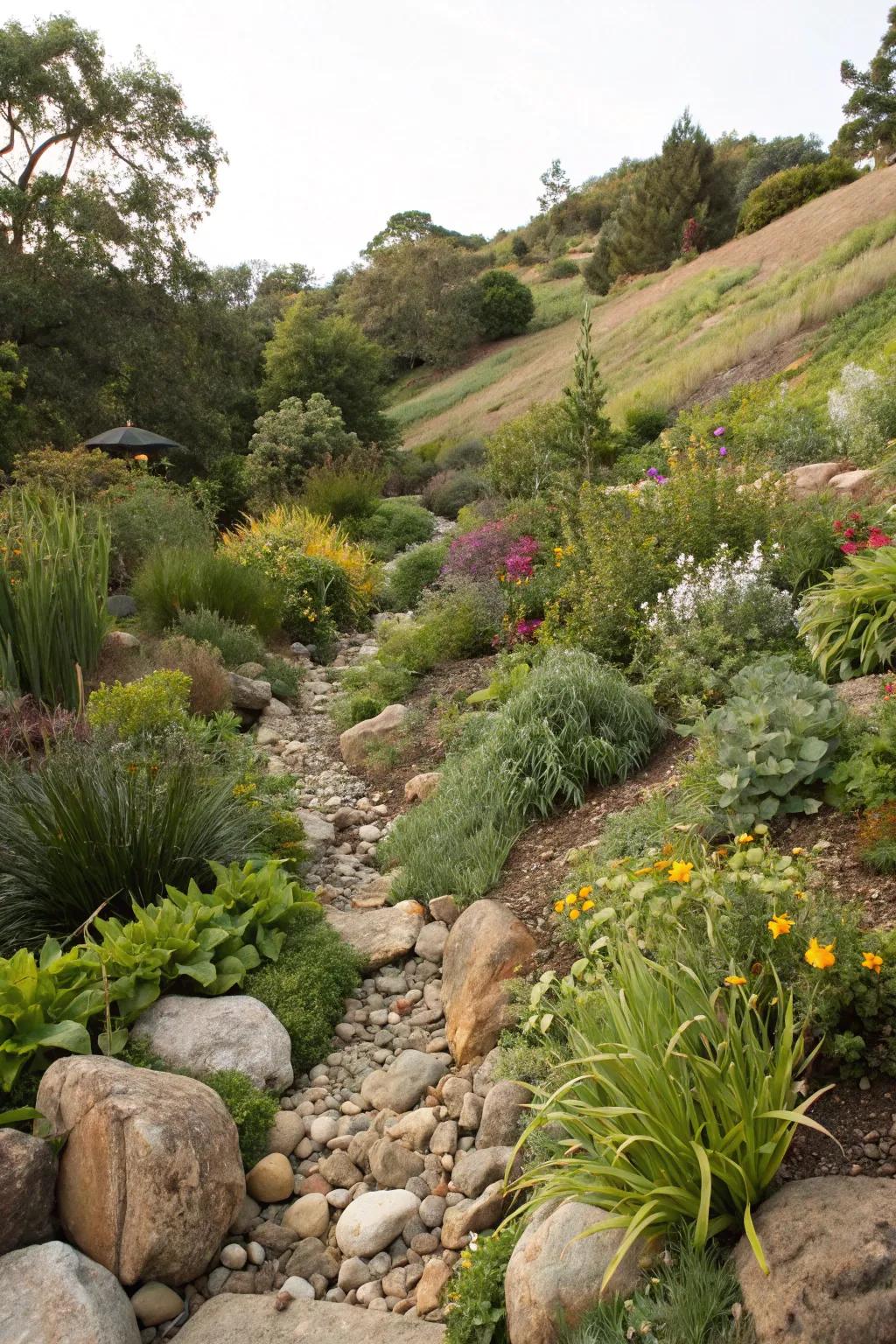
A dry creek bed can be a visually appealing way to manage drainage and prevent erosion. I designed mine with smooth stones and drought-tolerant plants, leading water away from trouble spots.
Possibly handy products:
- Landscape River Rocks: Enhance your dry creek bed with smooth, natural stones for improved aesthetics and effective drainage.
- Drought-Tolerant Plant Seeds: Introduce resilient plants to your landscape, adding beauty and reducing erosion around dry creek beds.
- Garden Weed Barrier Fabric: Install this barrier to prevent weed growth while allowing water flow in your dry creek bed.
12. Cozy Seating Areas with a View
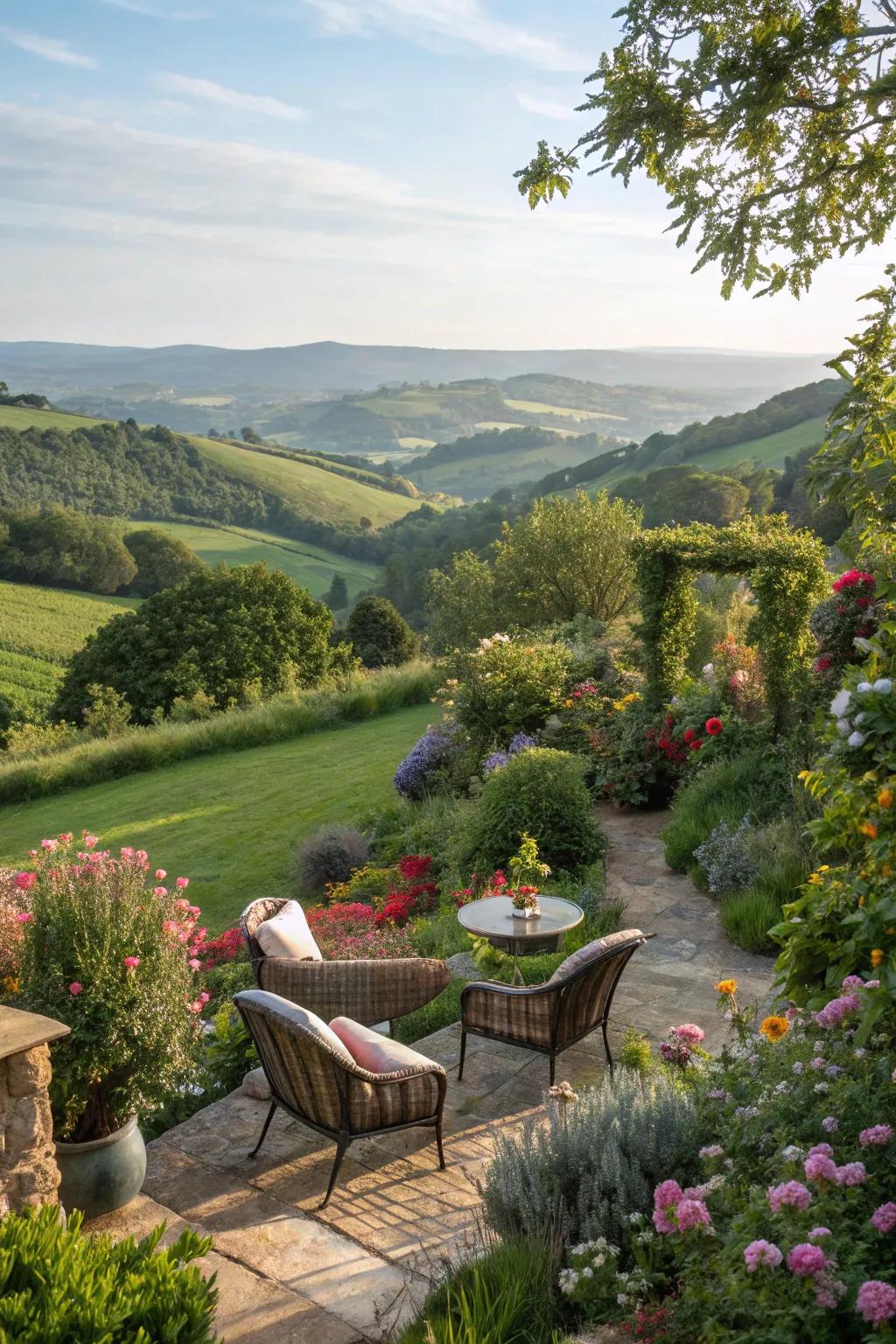
Creating a seating area on your hillside can make it a perfect spot to enjoy the view and relax. I nestled a small bench among my plantings, creating a peaceful retreat.
Maybe worth checking out:
- Outdoor Wicker Patio Set: Enhance your hillside retreat with this wicker set, offering comfort and elegance amidst nature.
- Decorative Outdoor Cushions: Add a splash of color and comfort with these vibrant, weather-resistant outdoor cushions.
- Compact Side Table: Keep your refreshments handy on this sleek side table, perfect for your hillside relaxation spot.
13. Plant Variety for Texture and Color
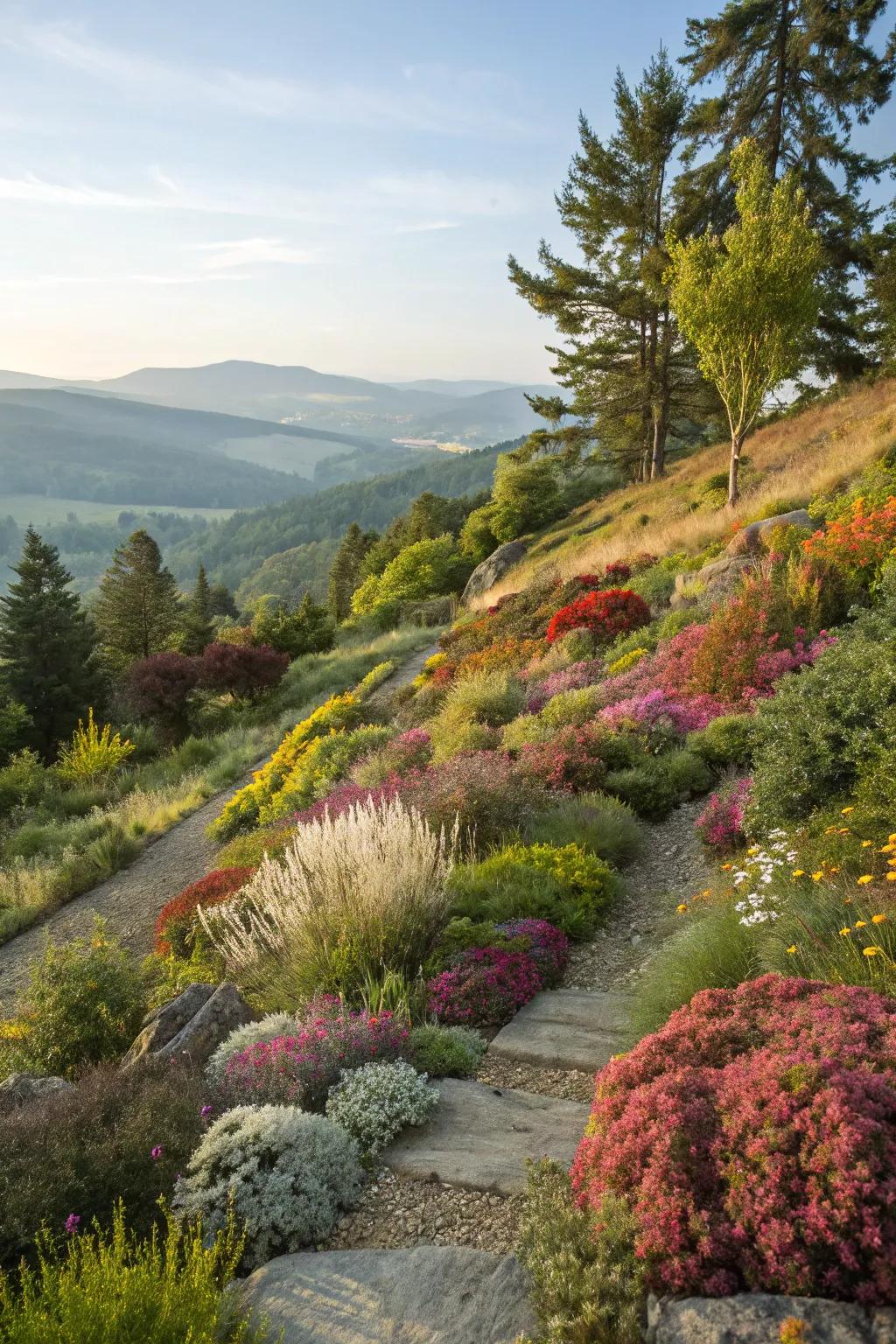
Mixing different shrubs, ground covers, and ornamental grasses can add texture and vibrant color to your hillside. I love experimenting with combinations that provide interest throughout the seasons.
Items that may come in handy:
- Mixed Shrub Variety Pack: Transform your hillside with a vibrant mix of shrubs perfect for adding seasonal interest.
- Ground Cover Plant Selection: Enhance hillside texture by planting diverse ground cover that thrives in various conditions.
- Ornamental Grass Collection: Add dynamic height and movement with ornamental grasses that complement any landscape design.
14. Enhance with Vertical Gardens
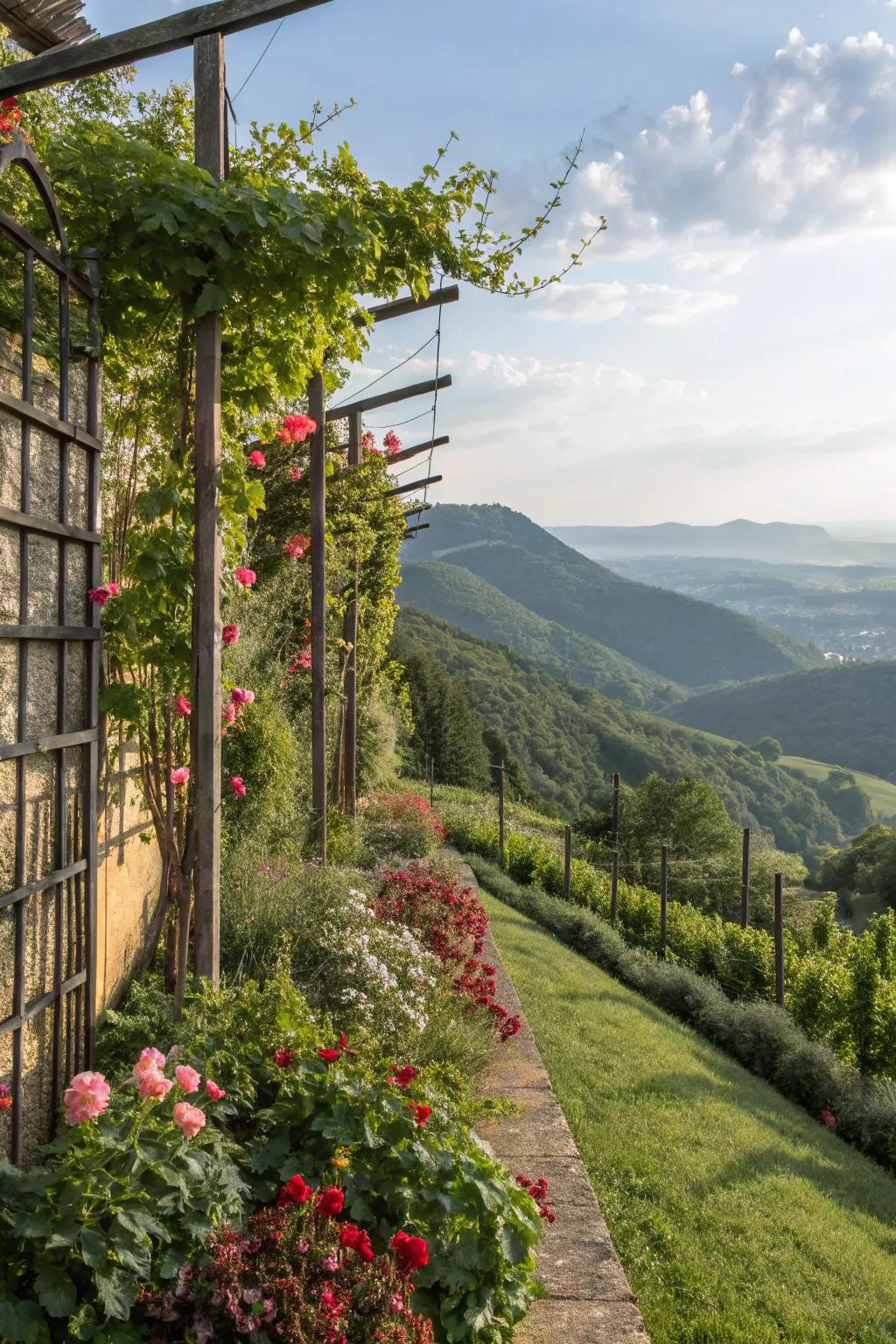
Vertical gardens or trellises can add height and interest to a hillside while saving space. In my garden, climbing plants like clematis create a colorful backdrop against the slope.
You might like:
- Adjustable Garden Trellis: Invite lush growth with an adjustable trellis suited for various plant heights on slopes.
- Climbing Plant Support Clips: Secure your climbing plants effortlessly with these strong, easy-to-use support clips.
- Durable Planting Containers: Beautify your hillside with durable containers, perfect for nurturing vibrant climbing plants.
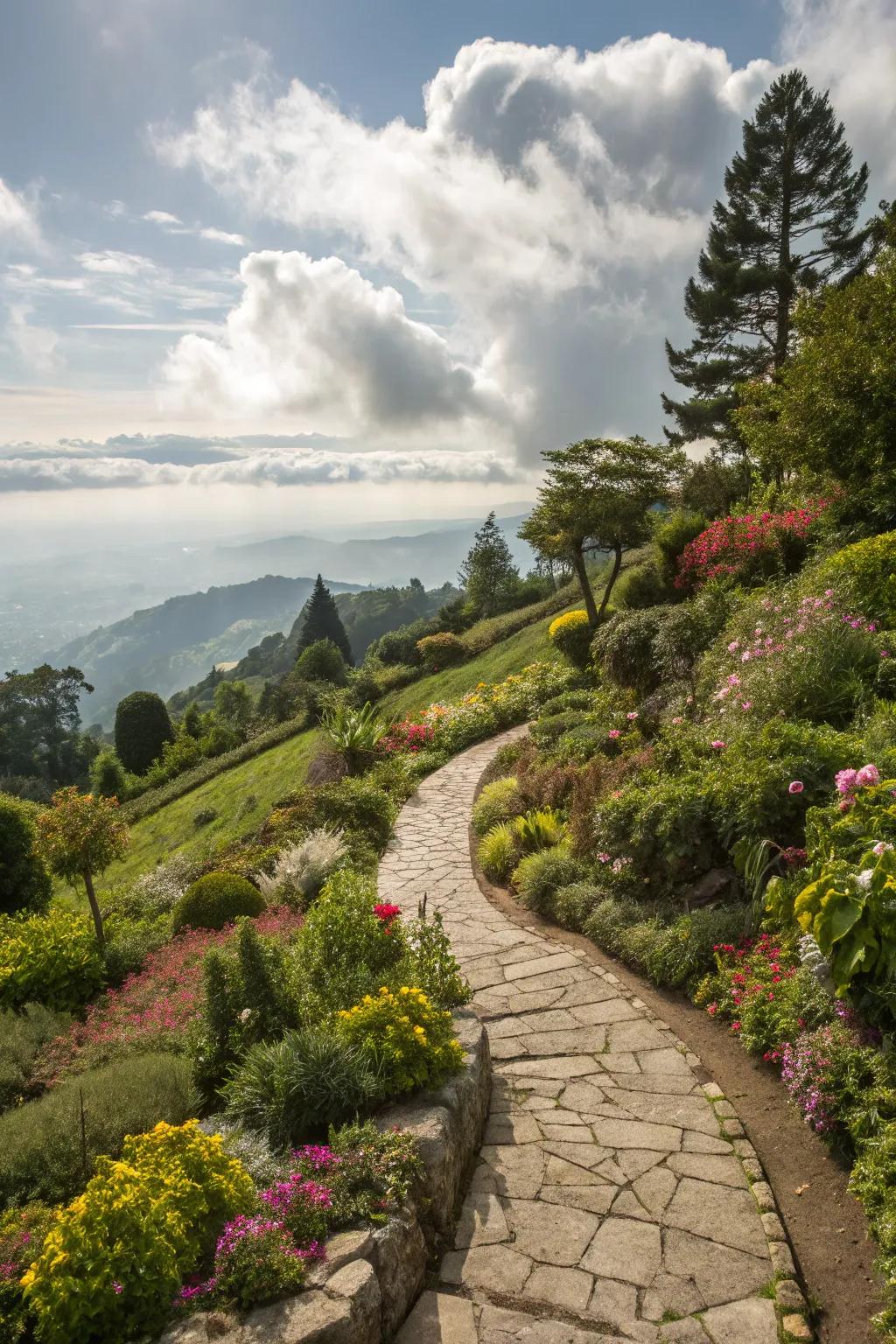
Adding stone pathways or steps not only makes navigating the hill easier, but adds charm to the landscape. In my garden, I crafted a winding path with local stones that blend seamlessly with the natural environment.
Check these products out:
- Garden Pathway Stone Kit: Create a charming stone pathway effortlessly, enhancing your garden’s accessibility and visual appeal.
- Landscape Fabric for Pathways: Use landscape fabric under your stones to prevent weed growth and improve drainage efficiency.
- Stone Pathway Lighting: Illuminate your stone path with solar lights for safety and ambiance during night-time strolls.
16. Water Features to Enhance the Slope
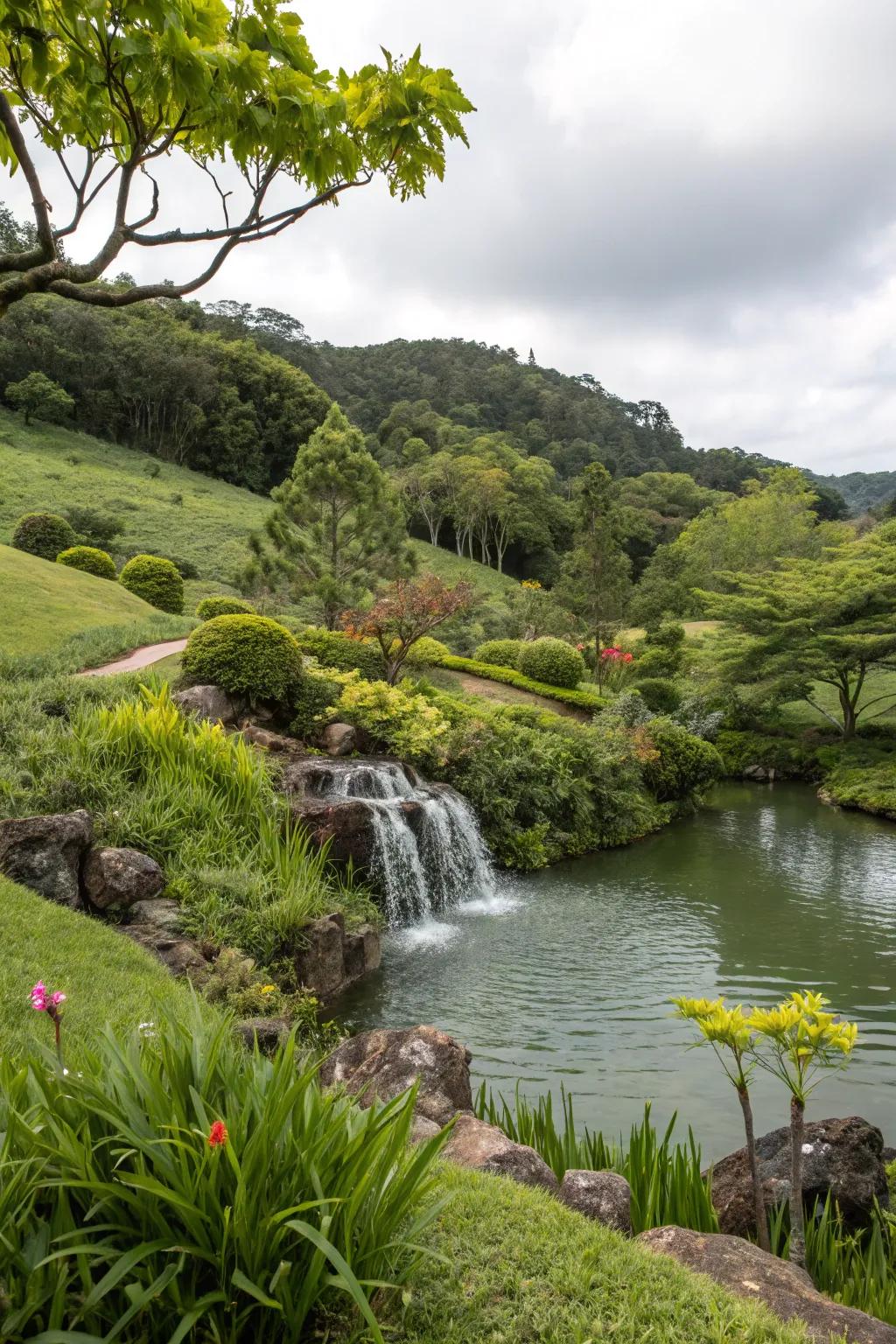
A cascading waterfall or small pond can accentuate the slope’s natural beauty while creating a calming soundscape. In my own backyard, a small waterfall became a centerpiece, attracting birds and adding tranquility.
Some handy options:
- Outdoor Waterfall Fountain Kit: Create a serene haven with a waterfall kit designed for easy setup in your garden.
- Solar Pond Pump with Fountain Heads: Harness solar power for a tranquil pond display, enhancing your garden’s eco-friendly appeal.
- Aquatic Plant Variety Pack: Introduce vibrant aquatic plants for a natural look and improved ecosystem balance in your pond.
17. Lush Ground Cover for Easy Maintenance

Fast-growing ground covers like creeping thyme or phlox can blanket your slope with minimal maintenance. In my garden, these plants provide a lush, green carpet that thrives on neglect.
Useful items to consider:
- Creeping Thyme Seeds: Transform your hillside with vibrant creeping thyme. Enjoy a colorful, low-maintenance carpet of greenery.
- Phlox Subulata Plants: Blanket your slope with these beautiful phlox subulata plants for effortless, lush ground coverage.
- Ground Cover Fertilizer: Boost your ground cover’s growth with this specialized fertilizer. Promote strong, vibrant plant development.
